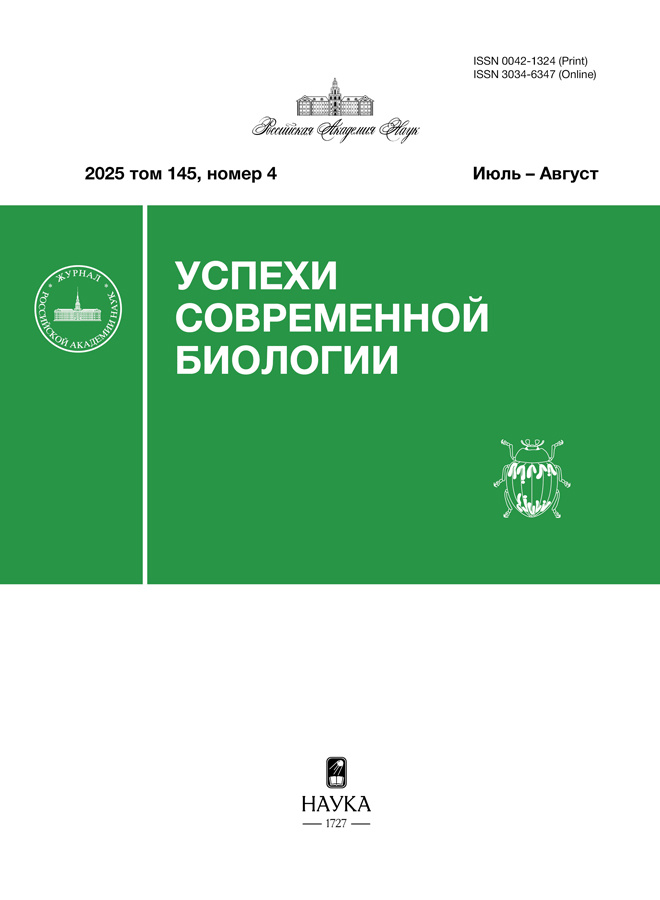Несинонимичные однонуклеотидные замены и инделы: вклад в молекулярный постгеномный портрет клеточной линии HepG2
- Авторы: Поверенная Е.В.1, Киселева О.И.1, Арзуманян В.А.1, Пятницкий М.А.1, Вахрушев И.В.1, Пономаренко Е.А.1
-
Учреждения:
- Научно-исследовательский институт биомедицинской химии им. В.Н. Ореховича
- Выпуск: Том 143, № 2 (2023)
- Страницы: 107-113
- Раздел: Статьи
- Статья получена: 17.10.2023
- Статья опубликована: 01.03.2023
- URL: https://journals.rcsi.science/0042-1324/article/view/138931
- DOI: https://doi.org/10.31857/S0042132423020096
- EDN: https://elibrary.ru/KMZWKK
- ID: 138931
Цитировать
Полный текст
Аннотация
В геноцентричном режиме проведен сравнительный анализ результатов геномного, транскриптомного и протеомного профилирования образцов клеточной линии HepG2. Показана прослеживаемость на транскриптомном и протеомном уровнях изменений, связанных с наличием несинонимичных однонуклеотидных замен и инделов в геноме. На транскриптомном уровне регистрируется большинство молекулярных событий, вызванных аберрациями на геномном уровне. В то же время лишь единичные протеоформы могут быть детектированы из числа кодируемых выбранными мутантными генами. Вероятно, это связано с методическими ограничениями протеомных методов, не позволяющих регистрировать протеоформы, присутствующие в образце в низких концентрациях. Результаты исследования согласуются с ранее полученными данными других научных групп и описывают принципиальные методические решения, требуемые для расшифровки молекулярного постгеномного портрета биологических образцов с разрешением на уровне аберрантных молекул.
Ключевые слова
Об авторах
Е. В. Поверенная
Научно-исследовательский институт биомедицинской химии им. В.Н. Ореховича
Автор, ответственный за переписку.
Email: k.poverennaya@gmail.com
Россия, Москва
О. И. Киселева
Научно-исследовательский институт биомедицинской химии им. В.Н. Ореховича
Email: k.poverennaya@gmail.com
Россия, Москва
В. А. Арзуманян
Научно-исследовательский институт биомедицинской химии им. В.Н. Ореховича
Email: k.poverennaya@gmail.com
Россия, Москва
М. А. Пятницкий
Научно-исследовательский институт биомедицинской химии им. В.Н. Ореховича
Email: k.poverennaya@gmail.com
Россия, Москва
И. В. Вахрушев
Научно-исследовательский институт биомедицинской химии им. В.Н. Ореховича
Email: k.poverennaya@gmail.com
Россия, Москва
Е. А. Пономаренко
Научно-исследовательский институт биомедицинской химии им. В.Н. Ореховича
Email: k.poverennaya@gmail.com
Россия, Москва
Список литературы
- Aebersold R., Agar J.N., Amster I.J. et al. How many human proteoforms are there? // Nat. Chem. Biol. 2018. V. 14. № 3. P. 206–214.
- Arzumanian V.A., Kiseleva O.I., Poverennaya E.V. The curious case of the HepG2 cell line: 40 years of expertise // Int. J. Mol. Sci. 2021. V. 22. № 23. P. 13135.
- Edfors F., Danielsson F., Hallström B.B.M. et al. Gene-specific correlation of RNA and protein levels in human cells and tissues // Mol. Syst. Biol. 2016. V. 12. № 10. P. 883.
- GTEx Consortium. Human genomics. The genotype-tissue expression (GTEx) pilot analysis: multitissue gene regulation in humans // Science. 2015. V. 348. № 6235. P. 648–660.
- Kiseleva O., Poverennaya E., Shargunov A., Lisitsa A. Proteomic Cinderella: customized analysis of bulky MS/MS data in one night // J. Bioinform. Comput. Biol. 2018. V. 16. № 1. P. 1740011.
- Liu Y., Mi Y., Mueller T. et al. Multi-omic measurements of heterogeneity in HeLa cells across laboratories // Nat. Biotechnol. 2019. V. 37. № 3. P. 314–322.
- Mellacheruvu D., Wright Z., Couzens A.L. et al. The CRAPome: a contaminant repository for affinity purification – mass spectrometry data // Nat. Methods. 2013. V. 10. № 8. C. 730–736.
- Pyatnitskiy M.A., Arzumanian V.A., Radko S.P. et al. Oxford nanopore minION direct RNA-Seq for systems biology // Biology. 2021. V. 10. № 11. P. 1131.
- Ponomarenko E.A., Poverennaya E.V., Ilgisonis E.V. et al. The size of the human proteome: the width and depth // Int. J. Anal. Chem. 2016. V. 2016. P. 7436849.
- Poverennaya E.V., Ilgisonis E.V., Ponomarenko E.A. et al. Why are the correlations between mRNA and protein levels so low among the 275 predicted protein-coding genes on human chromosome 18? // J. Proteome Res. 2017. V. 16. № 12. P. 4311–4318.
- Poverennaya E., Kiseleva O., Romanova A., Pyatnitskiy M. Predicting functions of uncharacterized human proteins: from canonical to proteoforms // Genes. 2020. V. 11. № 6. P. 677.
- Smith L.M., Kelleher N.L. Proteoform: a single term describing protein complexity // Nat. Methods. 2013. V. 10. № 3. P. 186–187.
- Tenzer S., Leidinger P., Backes C. et al. Integrated quantitative proteomic and transcriptomic analysis of lung tumor and control tissue: a lung cancer showcase // Oncotarget. 2016. V. 7. № 12. P. 14857–14870.
- Trivedi U.H., Cézard T., Bridgett S., Montazam A. et al. Quality control of next-generation sequencing data without a reference // Front. Genet. 2014. V. 5. P. 111.
- van der Auwera G.A., Carneiro M.O., Hartl C. et al. From FastQ data to high confidence variant calls: the genome analysis toolkit best practices pipeline // Curr. Protoc. Bioinformatics. 2013. V. 43. № 1110. P. 11.10.1–11.10.33.
- Vavilov N., Ilgisonis E., Lisitsa A. et al. Number of detected proteins as the function of the sensitivity of proteomic technology in human liver cells // Curr. Protein Pept. Sci. 2022. V. 23. № 4. P. 290–298.
- Venter J.C., Adams M.D., Myers E.W. et al. The sequence of the human genome // Science. 2001. V. 291. № 5507. P. 1304–1351.
- Vitrinel B., Koh H.W.L., Kar F.M. et al. Exploiting interdata relationships in next-generation proteomics analysis // Mol. Cell. Proteomics. 2019. V. 18. № 8. Suppl. 1. P. S5–S14.
- Yip Y.L., Famiglietti M., Gos A. et al. Annotating single amino acid polymorphisms in the UniProt/Swiss-Prot know-ledgebase // Hum. Mutat. 2008. V. 29. № 3. P. 361–366.
Дополнительные файлы












